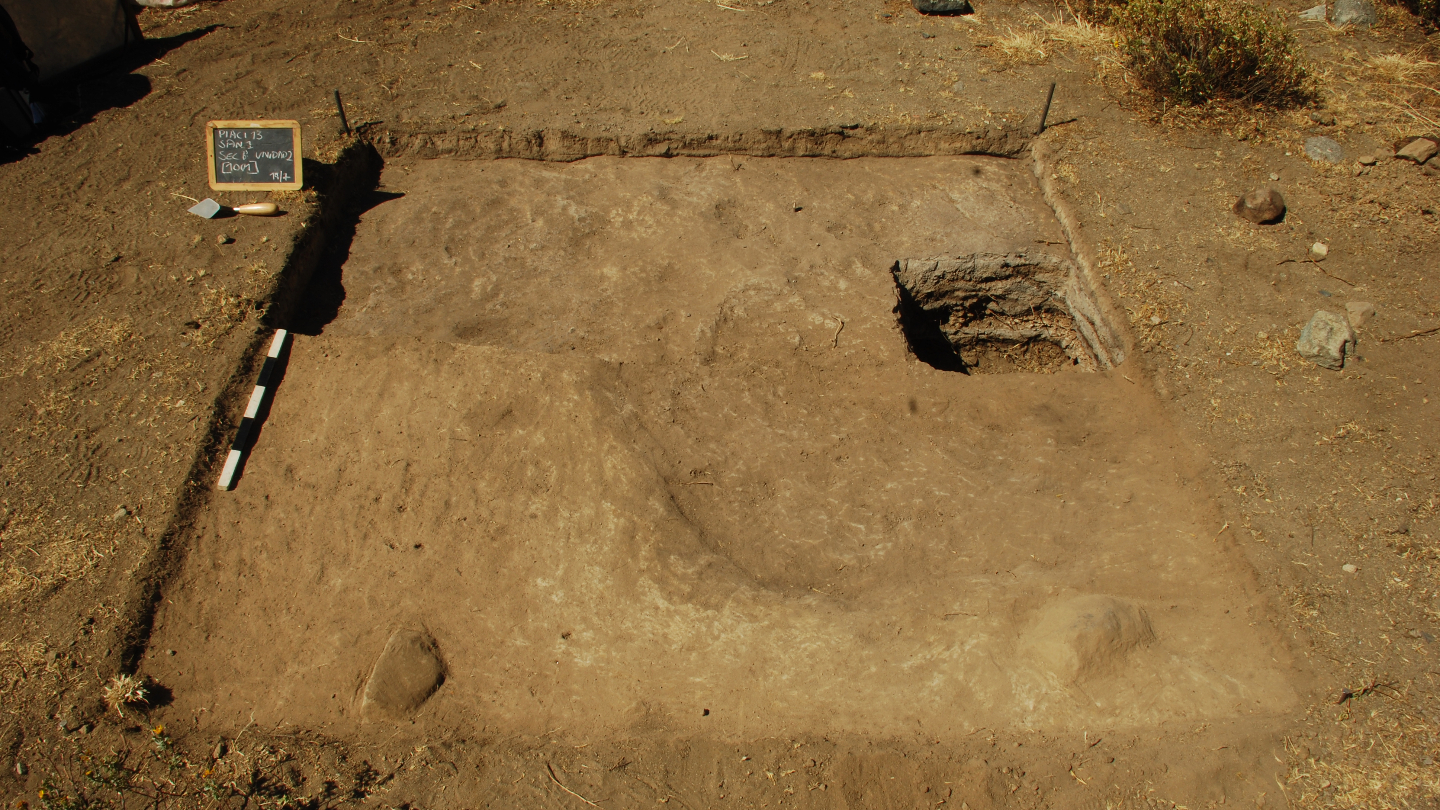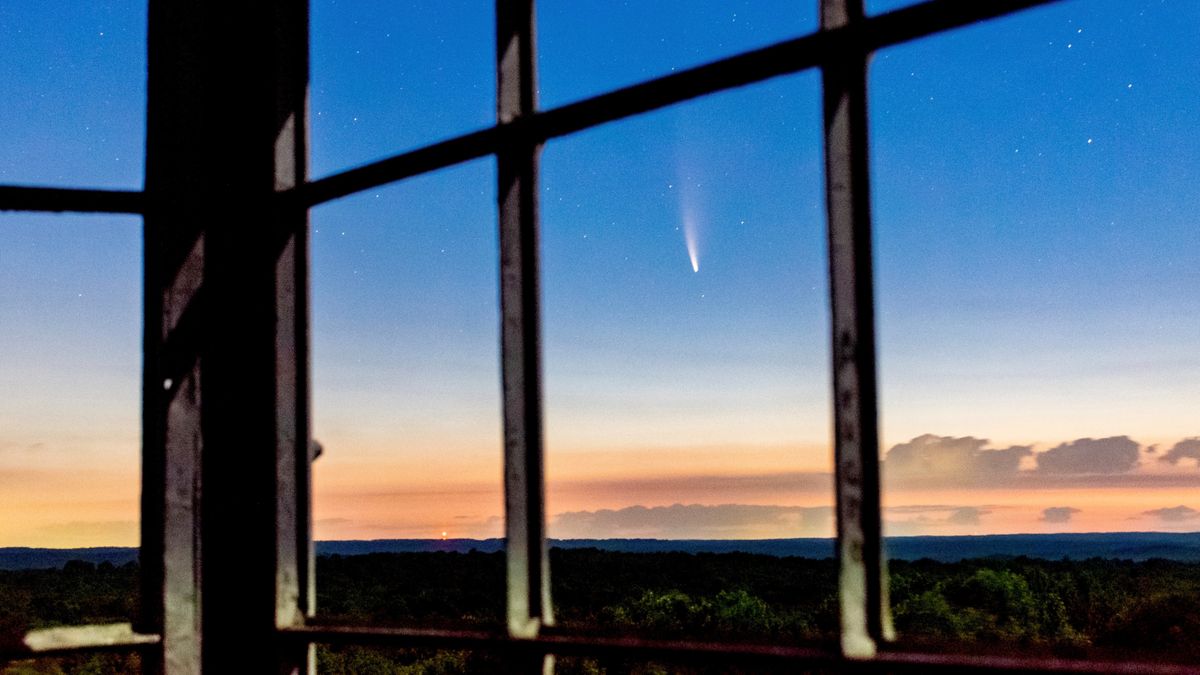Roughly a century before the Inca empire came to power in A.D. 1400, blasts of human-produced thunder may have rumbled off a ridge high in the Andes Mountains.
New evidence indicates that people who lived there around 700 years ago stomped rhythmically on a special dance floor that amplified their pounding into a thunderous boom as they worshipped a thunder god.
Excavations at a high-altitude site in Peru called Viejo Sangayaico have revealed how members of a regional farming and herding group, the Chocorvos, constructed this reverberating platform, says archaeologist Kevin Lane of the University of Buenos Aires. Different layers of soil, ash and guano created a floor that absorbed shocks while emitting resonant sounds when people stomped on it. This ceremonial surface worked like a large drum that groups of 20 to 25 people could have played with their feet, Lane reports in the September Journal of Anthropological Archaeology.
These findings, from a ridgetop ritual area that faces a nearby mountain peak, provide a rare glimpse of the role played by sound and dance in ancient societies (SN: 11/18/10).
While working at Viejo Sangayaico in 2014, Lane’s team first noticed that one of two open-air platforms located in a ritual area sounded hollow when people walked on it.
A later excavation of part of the platform uncovered six sediment deposits consisting of various mixes of silty clay, sand, ash and other materials. Ashy layers within a section of guano from animals such as llamas and alpacas included small cavities that helped to generate drumlike sounds from the platform’s surface, Lane says.
His team acoustically tested the platform by stomping on it one at a time and in groups of two to four while measuring the noise produced. The same was done while a circle of four people stomp-danced across the platform.
The resulting sounds ranged in intensity from 60 to 80 decibels, roughly equivalent to between a loud conversation and a noisy restaurant, Lane says. Larger groups of Chocorvos dancers, possibly accompanied by singing and musical instruments, would have raised a much bigger racket.
Spanish historical documents describe Chocorvos beliefs in thunder, lightning, earthquake and water deities. Supernatural convictions may have inspired ancient ceremonies at Viejo Sangayaico that included stomp dancing aimed at emulating a thunder god’s signature blasts, Lane suggests. In line with that suggestion, remains of a possible temple near the percussive platform included pottery pieces displaying snake images that, in the local Quechua language, refer to water or rivers and, in some instances, lightning.
Pre-Inca stomp dancing may also have influenced a dance practiced by the Chorcovos and other Andean groups in the mid-1500s, after Spanish conquest of the Incas in 1532, Lane suspects. The Chorcovos had been subjects of the Inca Empire for most of its run. As part of a resistance movement against Spanish culture called Taki Onqoy, Andeans danced and trembled ecstatically in circles, possibly to evoke spirits of their traditional deities.
Finding another percussive platform along with artifacts related to water and lightning rituals at other ancient Andean sites would better support Lane’s argument that sound-amplifying platforms provided a way to honor a thunder god as part of broader ceremonial events, says anthropological archaeologist Kylie Quave. To that end, researchers can now excavate platforms at other sites to check for guano layers and other elements of drumlike dance floors, says Quave, of George Washington University in Washington, D.C.
Whether makers of the Viejo Sangayaico platform designed it to amplify sounds, Chocorvos people could have discovered the surface’s drumlike properties and then used it for ceremonial dancing, says Miriam Kolar, an archaeoacoustics researcher at Stanford University.
Evidence of other sound-altering structures has also been found at Andean sites older than Viejo Sangayaico, Kolar says. Conch-shell horns found in a ceremonial center at a roughly 3,000-year-old site called Chavin de Huántar could have produced a range of sounds, from nearly pure tones to loud roars, that were emphasized in ceremonially important passages and ventilation shafts, Kolar and colleagues have found.
People today who live near Viejo Sangayaico say that another ancient site in the area contains a similar platform that resonates underfoot. Lane and colleagues have yet to visit that site.
Finding more sound-amplifying platforms will depend on “having your ear attuned to how different parts of a site sound,” Lane says, “which is something that archaeologists rarely do.”














